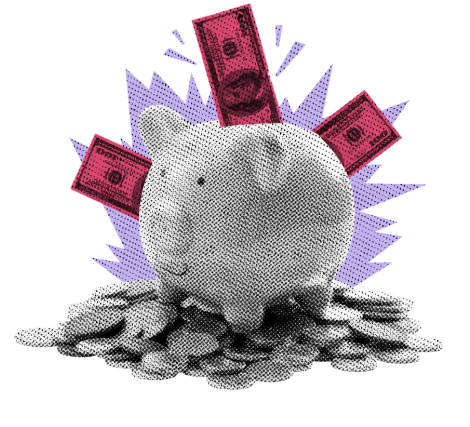
The Fed is expected to cut rates, but sticky housing inflation may complicate its path forward. Here’s what you need to know.
Last call! Nothing is perfect. Or rather, I should say that everyone has a different version of perfection. It’s personal. When it comes to the economy, surely there are at least 334 million opinions on how well things are going (that is the estimated population of the US). As I don’t have enough time to ask each of those folks, I will just give you a high-level view, which I think is in line with the consensus… of experts, that is.
The economy is doing OK. OK? Yes, OK. Consumption remains steady, CEOs are confident, which means that they will be investing more in the year ahead, corporate earnings are unarguably healthy, unemployment is slightly elevated but well within a comfort zone, and inflation… well, inflation… it, depends on how you look at it. Inflation can be driven by many factors, the most obvious is demand-pull inflation which is driven by you and me. Yes, our wallets with their cash and credit cards. When we use those, we keep the economy moving forward, but if we use those too aggressively, inflation ensues, as increased demand for goods and services drive prices higher. Decreases in supply can also cause inflation—it’s the same supply / demand equation but the inflation is driven by diminishing supply.
If we look at inflation figures, the headline numbers show a steady decline (disinflation) from peak levels experienced in the summer of 2022, however that steady decline has slowed in recent months, and even increased slightly. If we dig deeper by one level, we see that Goods inflation is actually negative (deflation), meaning prices are lower than they were a year ago. So, it’s not TVs, toys, furniture, etc. The culprit, as you well-know remains with services. Now, your hair stylist may have something to do with it, but it isn’t them alone. It is really Housing and Healthcare.
You may not be surprised about Healthcare, which is a mess in need of a serious untangling (I won’t get into that today but look back over my last few weeks of notes and you will find some goodies there if you want more on that topic). I know that you have heard about housing inflation—I have certainly mentioned it far too often. You would probably only know about housing inflation if you were in the market to rent an apartment or were seeking to buy a home. I know you have gone on Zillow, clicked on a house you fancied, and scrolled down to the section where it shows the price history only to gasp 😲 when you see how much the price / Zestimate has increased over the past few years. But what about the rest of us who may not be looking to move at the moment? I suppose you could look up your own home on Zillow and see its Zestimate of your home. I am sure that you have, at least once. 😉 That Zestimate is largely based on comparable homes to yours that have sold in your neighborhood. There probably haven’t been many nearby sales, because there are not too many on the market, new construction or existing. That is because supply is low, and because of that, someone else bit the bullet and paid A LOT for a similar house to yours. It starts there with low supply and high demand driving home prices higher.
So, is that how shelter inflation is calculated? If it is, no wonder it appears so sticky. But it is not calculated that way. No, housing inflation is based on Owner’s Equivalent Rent (OER). If I asked you how much you would have to pay to rent your own home, what would you say? Would you say that the rent is going higher or lower? Based on what Zillow says your house is worth and, since you know that there are very few homes for rent in your neighborhood, you may come up with a lofty estimate. If you take it a step further and notice that mortgage rates are kind of stuck in that 6.75% to 7.25% range when they were around 3% just a few years ago, you might raise your estimate yet further. Think about it. 🤯
First, this method for calculating the imputed cost of housing is rather obscure. Second, it accounts for around ¼ of the total Consumer Price Index / CPI, and that is significant. Let us say, that you are OK with the methodology. Or maybe you are not, but your gut tells you that housing costs are in fact growing faster than the 2% target set by the Fed. Whatever the case, costs of shelter are indeed NOT declining! Going back to the root cause of all this, we note that scarce supply is a big driver of housing inflation. Freddie Mac estimates that there is a 3.7-million-unit deficit in the housing market. That can be a problem! What is causing this undersupply? At a high level, we note that homebuilders are not keeping pace with population growth. Why is that you ask? Well, homebuilding has notably slowed in the wake of the Global Financial Crisis. That slowdown has been exacerbated by labor and material shortages which really ramped up during the pandemic. Finally, it is important to note that real estate development is highly dependent on debt, and the cost of borrowing is much higher than it was in the past decade, raising the bar even higher for developers.
So, if you were the Fed and you had to decide what to do to tamp down this last holdout of inflation, what would you do? Is it clear that keeping rates high or raising them further will only make housing inflation WORSE? Given the satisfactory health of the economy and labor market at current, the Fed is likely to be more concerned with the recent stalling of disinflation. That may cause FOMC members to opt for a pause in rate-cutting for now. That seems reasonable and conservative… unless you realize that housing supply weakness can be fixed by LOWERING rates. To be clear, re-zoning creates more plots of land available to develop, but that still doesn't solve the problem of higher borrowing costs, which will at best keep supply low, and at worst, cause your landlord to charge higher rent to cover their high borrowing costs.
Today, the Fed is largely expected to cut interest rates by -25 basis points but signal a pause in rate-cutting going forward. That message will be communicated in either its policy statement, by Powell in his press conference, or in the Fed’s quarterly projections which will also be released today. The logic behind that hawkish rate-cut is to keep inflation from rising again, as per the sticky services inflation in the CPI and the PCE Price Index… driven by Owner’s Equivalent Rent (CPI) and Imputed Rent of Owner-occupied Housing (PCE). Let’s hope that at least the Fed gets the messaging right.
YESTERDAY’S MARKETS
Stocks declined yesterday as the bulls decided to sit that dance out and wait to hear what Powell and his gang have to say this afternoon. Meanwhile, bond traders have made their 2025 predictions, and they are expecting inflation and a bulging budget deficit.

NEXT UP
- Housing Starts (November) are expected to have increased by 2.6% after falling by -3.1% in October.
- Building Permits(November) may have gained by 1.0% after falling by -0.4% in the prior period.
- The FOMC will release its policy statement and projections (include Dot Plot) at 2:00 PM Wall Street Time. Chairman Jerome Powell will hold a press conference at 2:30 PM. That will be a lot to take in for the market, so we expect to see volatility. Have a fresh cup of tea or coffee nearby!
- Micron and Lennar will announce earnings after the closing bell, while General Mills and Jabil beat EPS and Sales estimates this morning.
.png)

